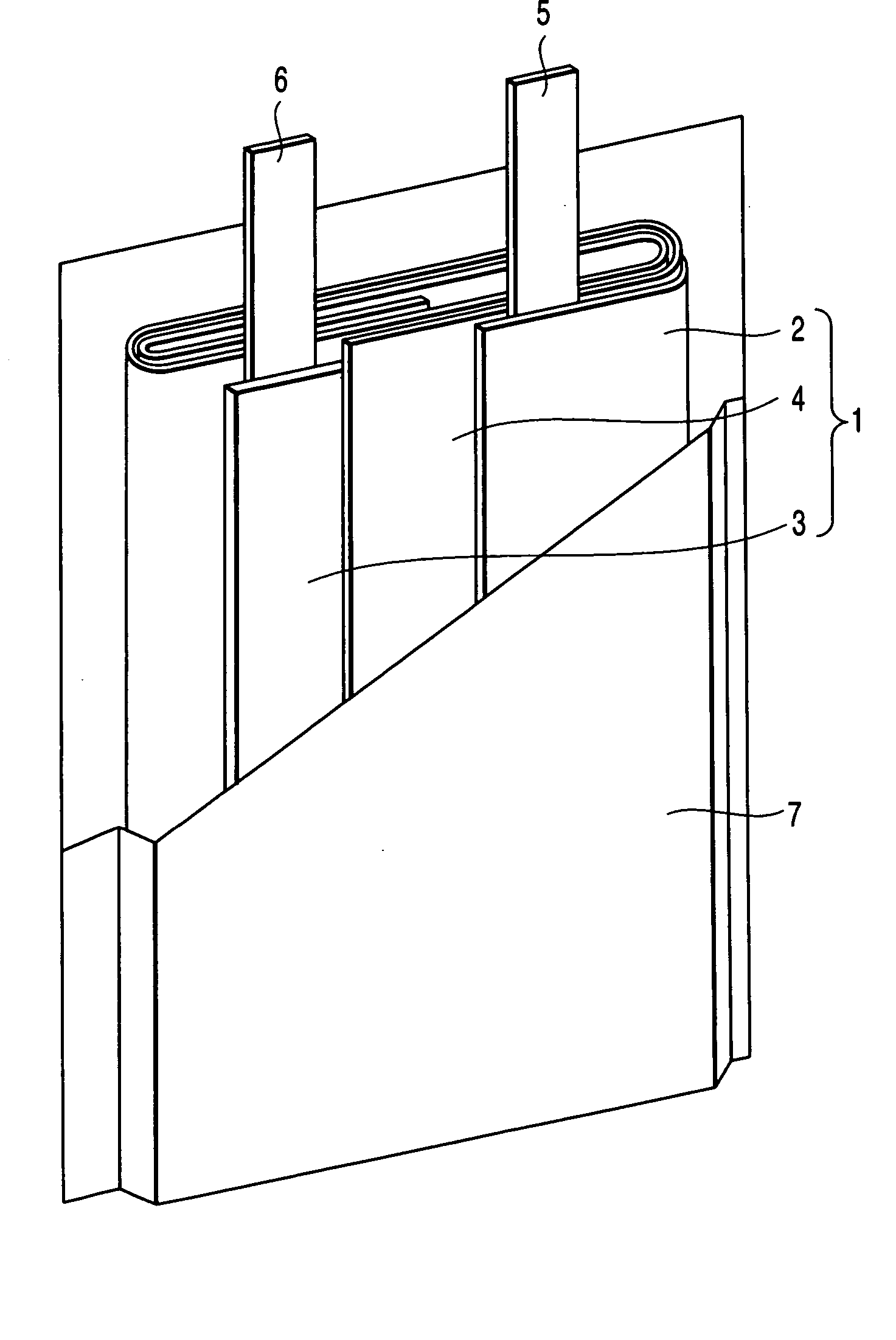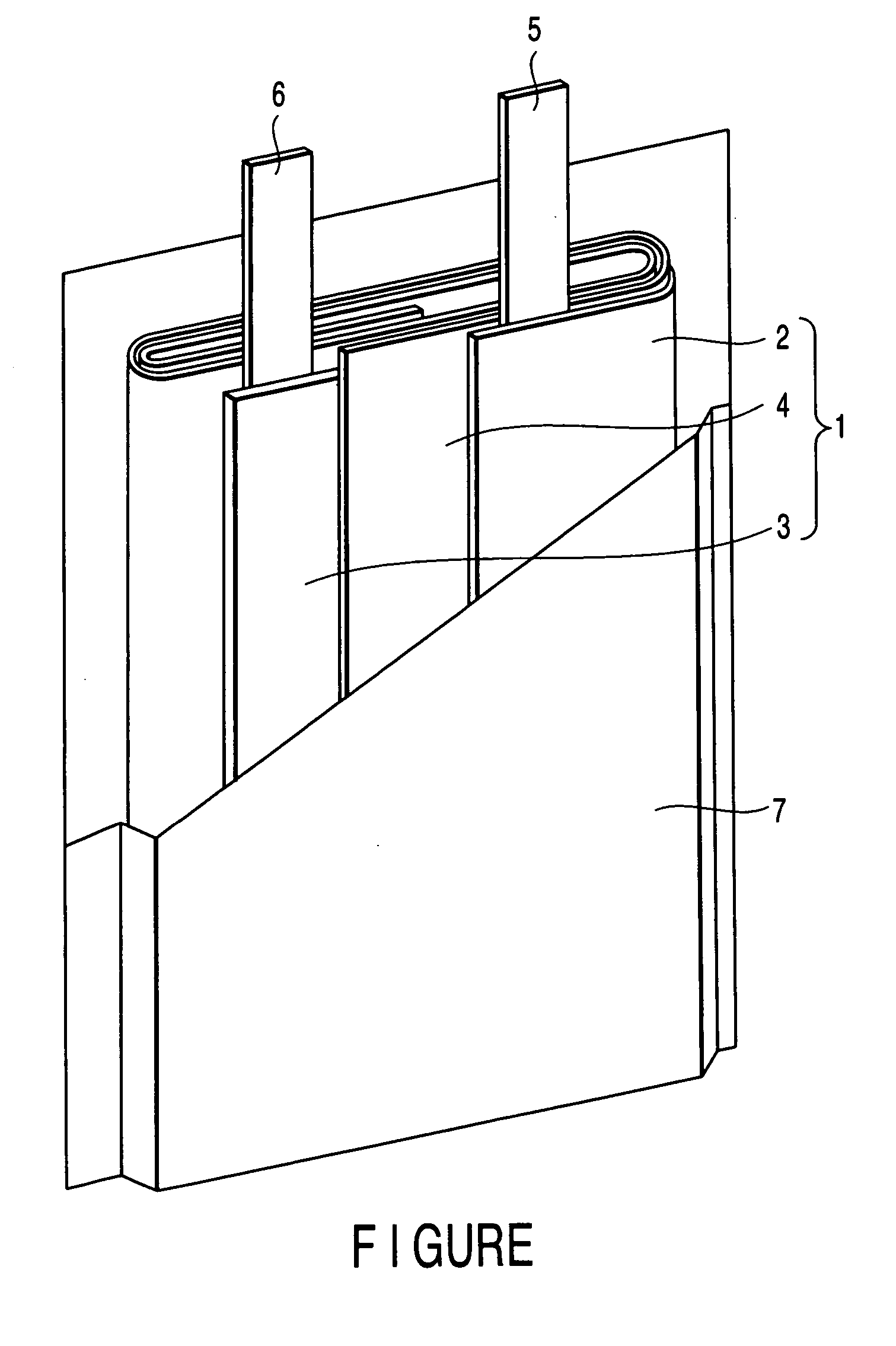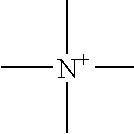Nonaqueous electrolyte
a technology of electrolyte and non-aqueous electrolyte, which is applied in the direction of non-aqueous electrolyte cells, cell components, electrochemical generators, etc., can solve the problems of reduced high-rate characteristics and long life performance, non-volatile and incombustible electrolysis solutions, etc., and achieve excellent high-rate characteristics and charge-discharge cycle characteristics.
- Summary
- Abstract
- Description
- Claims
- Application Information
AI Technical Summary
Benefits of technology
Problems solved by technology
Method used
Image
Examples
example 1
(EXAMPLE 1)
[0082] For preparing a positive electrode, a slurry was prepared by dispersing in an n-methyl pyrrolidone (NMP) solvent a mixture consisting of a Spinel-type lithium-manganese-nickel composite oxide (LiMn1.5Ni0.5O4), which was used as the active material of the positive electrode, a graphite powder, which was used as a conductive agent, in an amount of 8% by weight based on the amount of the entire positive electrode, and PVdF, which was used as a binder, in an amount of 5% by weight based on the amount of the entire positive electrode. Then, an aluminum foil used as a current collector and having a purity of 99.99%, a thickness of 15 μm, and an average crystal grain size of 10 μm was coated with the slurry thus prepared, followed by drying and pressing the aluminum foil coated with the slurry so as to obtain a positive electrode having an electrode density of 3.5 g / cm3.
[0083] Also, for preparing a negative electrode, a dispersion was prepared by dispersing in an n-methy...
example 2
(EXAMPLE 2)
[0090] A thin nonaqueous electrolyte battery was manufactured as in Example 1, except that the average primary particle diameter and the specific surface area of the active material of the negative electrode were set as shown in Table 1, and that the slurry used for preparing the negative electrode was stirred for 2 hours with the rotating speed of the ball mill set at 1,500 rpm so as to obtain the negative electrode having the porosity and the specific surface area as shown in Table 1.
example 3
(EXAMPLE 3)
[0091] A thin nonaqueous electrolyte battery was manufactured as in Example 1, except that the average primary particle diameter and the specific surface area of the negative electrode active material were set as shown in Table 1, and that the slurry used for preparing the negative electrode was stirred for 4 hours with the rotating speed of the ball mill set at 1,500 rpm so as to obtain the negative electrode having the porosity and the specific surface area as shown in Table 1.
(EXAMPLES 4 TO 6)
[0092] A thin nonaqueous electrolyte battery was manufactured as in Example 1, except that the average primary particle diameter and the specific surface area of the negative electrode active material and the porosity and the specific surface area of the negative electrode were set as shown in Table 1.
PUM
| Property | Measurement | Unit |
|---|---|---|
| specific surface area | aaaaa | aaaaa |
| particle diameter | aaaaa | aaaaa |
| porosity | aaaaa | aaaaa |
Abstract
Description
Claims
Application Information
 Login to View More
Login to View More - R&D
- Intellectual Property
- Life Sciences
- Materials
- Tech Scout
- Unparalleled Data Quality
- Higher Quality Content
- 60% Fewer Hallucinations
Browse by: Latest US Patents, China's latest patents, Technical Efficacy Thesaurus, Application Domain, Technology Topic, Popular Technical Reports.
© 2025 PatSnap. All rights reserved.Legal|Privacy policy|Modern Slavery Act Transparency Statement|Sitemap|About US| Contact US: help@patsnap.com



